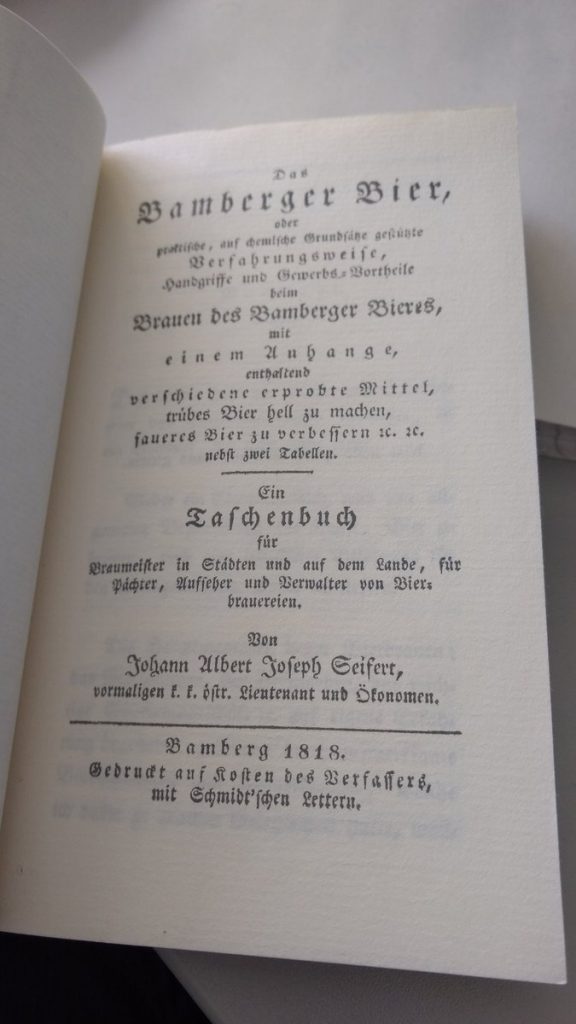I recently brewed a Berliner Weisse, submitted it to SLOSH SOUR 2019, a homebrewing competition dedicated to Berliner Weisse, and I won! So here I’m documenting how I brewed and what’s the rationale behind it.
Since the homebrewing competition was about brewing straight Berliner Weisse, with no twists and no innovations, I decided to simply follow how Berliner Weisse used to be brewed according to historic brewing literature.
Grist
Naturally, I wanted to use large amounts of pale wheat malt. Historically, the wheat malt used in Berliner Weisse was high in protein and quite undermodified. Malt like that is practically impossible to get, so instead, I chose to use a large amount of chit malt. To bulk the grist up a bit more, I also added some floor-malted Bohemian Pilsner malt. The final grist looked like this:
- 2 kg pale wheat malt (Weyermann)
- 1 kg chit malt (BEST)
- 0.5 kg floor-malted Bohemian Pilsner malt (Weyermann)
Hops
Berliner Weisse is classically mash-hopped, so I simply added 6 g of Tettnanger hops (3.4% alpha acid) to the mash.
Mashing
I mashed in all the malt with 10 liters of hot water. To stay authentic, I used untreated Berlin tap water. I slightly underestimated the required temperature, so the resulting mash temperature was 46°C. I then heated it up to 53°C and did a protein rest of 40 minutes.
I then heated up the mash up to 62°C, and did a brief saccharification rest of 15 minutes, then further heated it up to 72°C to rest and convert for 45 minutes. After these 45 minutes, the mash was completely converted.
Now this is obviously a weird mash schedule, but in fact I based it on the mash schedule documented by the former Groterjan brewmaster A. Dörfel. At Groterjan, an initial protein rest was done at about 53-54°C, then the mash was slowly heated up to 75°C. I did a brief 62°C rest because I assumed that on my homebrew kit, heating up would be much quicker than on Groterjan’s big kit. I also kept the temperature a bit lower to prevent any issues from potentially overshooting the target temperature. I also left out one step that Groterjan did: they boiled parts of the mash as a final step and slowly mixed it back, trying to keep the temperature at a maximum of 76°C. This just did not make sense for me to do on my homebrew kit.
After conversion was finished, I moved the mash to my lauter tun, briefly did a lauter rest, and then started lautering and sparging. I collected about 20 liters of wort, which I then brought up to 80°C to pasteurize it for 10 minutes. I then chilled the wort down to 20°C and pitched all my microorganisms.
Yeast and Bacteria
I pitched half a sachet (5g) of S-04 dry yeast, a pack of White Labs WLP672 Lactobacillus brevis and a pack of White Labs WLP650 Brettanomyces bruxellensis at the same time, and let it ferment together.
If you want to recreate this and are worried about infections: my protocol is to simply have a separate fermenter for anything involving Brett and Lacto fermentation, that hasn’t caused me any issues in the past.
Primary fermentation quickly started and was finished after about 3 days. The souring process took a bit longer, but after about 3 weeks, the young beer had attained a good acidity. Around the same time, a secondary fermentation, presumably from the Brettanomyces kicked off, which was done after about a week. I then let the beer sit in the fermenter for another few weeks, and then bottled it. As priming sugar I used common sugar, and went for a carbonation level of 6 g/L. Then I put all the bottles in a quiet corner and let it mature.
The OG of the beer was 8.8°P (1.035), slightly higher than the 8°P I had actually planned. At bottling time, the FG was measured to be 0.8°P (1.003). The calculated amount of alcohol is therefore 4.2% ABV. A bit higher than what I wanted to go for, but still low enough to make the beer low and refreshing.
At the time of the competition, the beer was about 2.5 months old, so still fairly young. According to one taster who described himself as hypersensitive to sulphur, it still had some hints of sulphur left. The overall flavour and aroma was quite pleasant though: tart, citrusy, but not overly sour, so that the beer was still balanced and refreshing.
I still have a few bottles left, so my plan is to keep some of them and age them for longer. This should definitely help the Brettanomyces develop more complex and interesting flavours. I also kept the yeast from the bottom of the fermenter, and I plan to repitch it in future batches. I’m actually thinking about brewing another Berliner Weisse soon, just to have something to age and maybe hand in for next year’s SLOSH SOUR competition.
Thanks to everyone involved, in particular THE MASH PIT who organized the homebrewing competition, and Berliner Weisse Kultur e.V. who made it possible for me to present my home-brewed beer to a wider audience at Berliner Weisse Gipfel.


